What Is Door?
Doors are a crucial component of a building because they allow people to enter and exit. A door is defined as an openable barrier or a framework constructed of steel, aluminum, wood, or a combination of these materials that can be opened.
It is critical to select the ideal entrance for your home because the door is directly linked to the property’s security. The doors also enhance the elegance of the building.
Functions of Doors:
- The structure includes doorways that provide entry within the building’s rooms.
- The doors in the buildings act as a link between the various parts of the building’s interior.
- It will also provide the chamber with ventilation and lighting.
- It will aid in maintaining the rooms’ modesty.
Different Types of Doors:
There are many different types of doors on the market, each of which is classed based on the material, location, functioning of the door shutter, construction process, and arrangement of the doors.
A. Types of Doors Based on Materials:
1. Aluminum Doors:
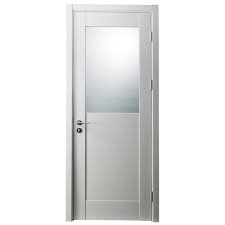
Fig 1: Aluminum Door
Courtesy: housing.com
Because of the security, beauty, and insulation features that aluminum doors provide are already the first-choice solution for contemporary construction. Aluminum is a well–known fact for being a strong and sturdy material that requires little maintenance.
Aluminum is, without a doubt, a high-quality material. It has already been put to the test, and while it is a little pricey, it is one of the best options for doors. Aluminum doors are suitable for residential and commercial applications; they are ideal for glazing and glass fronts and provide a high–quality frame.
2. Steel Doors:
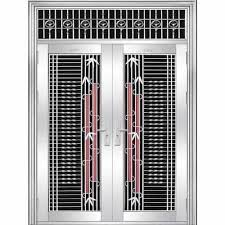
Fig 2: Steel Door
Courtesy: stylesatlife.com
Steel doors can be found on the inside and outside of structures. For insulation, these doors have a steel face with a foam core. In comparison to other doors, they are quite durable. They may not have the same aesthetic appeal as a wooden or glass door.
Steel doors are commonly found in commercial structures. Steel doors have a stronger outer layer than other doors, making them more robust.
3. PVC Doors:
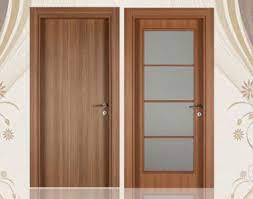
Fig 3: PVC Door
Courtesy: stylesatlife.com
PVC (polyvinyl chloride) or polyvinyl chloride (PVC) doors are popular for bathroom doors. These lightweight doors help you save time and money by reducing the amount of labor you do. These painted wooden doors are low-maintenance due to the absorbent, natural fibers of the wood. If you choose PVC shower doors, you will discover that they are easy to install and clean.
4. Glass Doors:
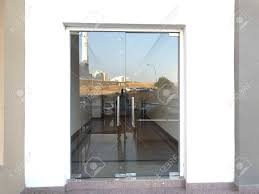
Fig 4: Glass Door
Courtesy: 123rf.com
Glass doors are stylish and bring beauty and richness to your home. They create a direct passage to light in your home. Cut glass panels placed into timber frames make an attractive alternative to traditional front doors. This door has the problem of being easily smashed. As a result, they need to be treated with care. With the toughened glass, however, this would not be easy.
5. Wooden Doors:
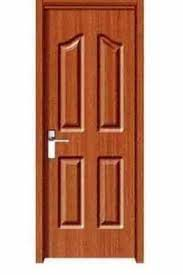
Fig 5: Wooden Door
Courtesy: 123rf.com
There are several advantages to using wood doors, including soundproofing, insulation, and security. They’re simple to set up and maintain. They live for a long time. They have a distinct attraction because they are natural materials. They do appear to be elegant. They’re quite pricey.
Interior doors are the most common use for these types of doors. Timber is the oldest material for doors, and it never seems to go out of style.
6. Fiberglass doors:
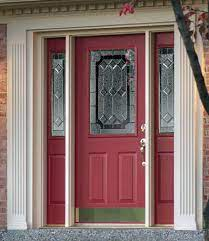
Fig 6: Fiberglass Door
Courtesy: pjfitz.com
Fiberglass is one of the most solidified products with relatively cheap maintenance costs compared to wood and steel. Fiberglass doors are well-known for not warping, bowing, or twisting. Fiberglass comes in a variety of colors and patterns. These doors can be molded into various forms and styles to suit your needs.
Glass fiber is made by connecting fiber with resin, which can be used to make several products such as bathtubs, doors, and windows, among others.
7. Fiber Reinforced Plastic Doors:
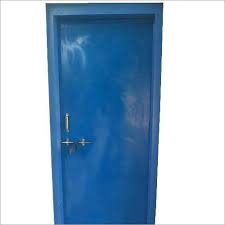
Fig 7: Fiber Reinforced Plastic Door
Courtesy: tradeindia.com
It comes in a variety of colors and finishes on the market. Fiber-reinforced plastic doors offer a variety of benefits, including increased strength, minimal maintenance, all-weather resistance, ease of construction, lightweight, and corrosion resistance.
B. Types of Doors Based on Location:
8. Exterior Doors:
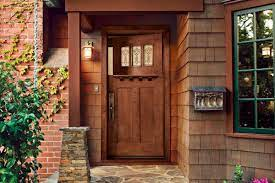
Fig 8: Exterior Door
Courtesy: thisoldhouse.com
The value of a home’s outside or front doors is emphasized. Exterior doors offer access to and exit from home while also providing security. The external doors are provided with suitable thickness, stability, and durability of construction because they are exposed to varied climatic conditions. Paint and polish are applied to the exterior doors as a protective layer. Steel or wood are the most common materials used. They are well-designed to accommodate various lock types.
9. Interior Doors:
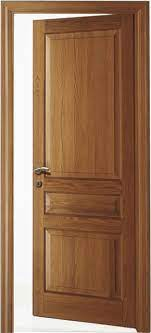
Fig 9: Interior Door
Courtesy: arcadicustom.com
Interior doors, which come in various materials, are used inside structures. Internal doors are solely used to create a barrier between rooms. Internal doors are not subjected to or exposed to harsh weather conditions.
C. Types of Doors Based on the Operation of Door Shutter:
10. Sliding Doors:
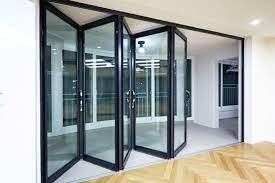
Fig 10: Sliding Door
Courtesy: homify. in
Steel, wooden, and glass shutters create the sliding doors supported by steel rollers. The steel rollers roll along a track at the top and bottom of the structure. Depending on the opening, it has one or more sliding shutters. Sliding steel and wood doors were commonly used for large openings such as godowns, workshops, garages, and other structures in the past.
Sliding doors are commonly used in offices and other congested areas to save space and improve productivity.
11. Folding Doors:
“Folding door” refers to a door that opens by folding back in portions or “panels.” They’re formed of vertical strips or wrinkles that fold back into a small bundle. These strips will be hung from the ceiling and run on a track.
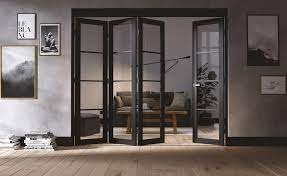
Fig 11: Folding Door
Courtesy: homify. in
They take up less space because they don’t swing out or in. A better option is when there isn’t enough space to install a sliding door. Foldable doors, like sliding doors, provide poor insulation. They are also noisy and have a low durability rating.
12. Pivot Doors:
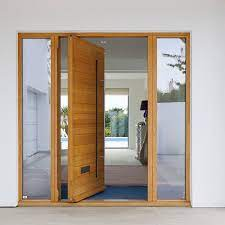
Fig 12: Pivot Door
Courtesy: urbanfront.com
Pivot doors have a unique pivot hinge with pins at the top and bottom that attach to the door. Pivot hinges have the advantage of holding much larger and heavier doors than standard pin and barrel hinges. It provides visual originality in opening and shutting and an eye-catching swinging function, thanks to the technical benefit. For the most part, pivot doors are used for entry doors.
13. Revolving Door:
The four leaves of the revolving door are joined to a centrally located mullion in a circular opening. The center member’s mullion is equipped with a ball bearing at the bottom and a bush bearing at the top, allowing the door to rotate smoothly
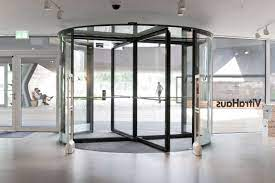
Fig 13: Revolving Door
Courtesy: urbanfront.com
In most cases, revolving doors are installed in front of the building. Revolving Doors are best used in areas with a high volume of people entering and exiting the building daily.
Banks, hospitals, theaters, and workplaces, among other places, utilize revolving doors. The arrangements of a revolving door are built so that the door rotates around the center pivot.
14. Collapsible Doors:
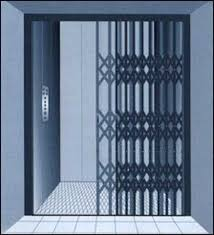
Fig 14: Collapsible Door
Courtesy: connect2India.com
Collapsible doors are commonly employed when the opening width is large, and the availability of hinged shutters is limited. They are made of rolled steel channels with rollers at the bottom that let them roll on tracks as they open or close, increasing safety and property protection.
The door comprises double vertical channels, each measuring 20 x 10 x 2 ram and positioned 10 to 12 cm apart and connected by cross iron pieces. Depending on the size of the aperture, the cross iron pieces are normally 10 mm to 15 mm wide and 5 mm thick.
The door is equipped with locking mechanisms, handles, stoppers, and other features, and it may be opened or closed with a gentle pull or push. These doors are commonly found at the main entrances of residential buildings, stores, garages, public buildings, and godowns, among other places.
15. Swinging Doors:
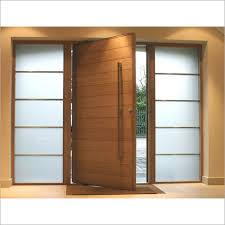
Fig 15: Swinging Door
Courtesy: tradeIndia.com
Swinging doors are hinged near one edge to revolve around a vertical axis. The shutter is linked to the frame using double action springs on these doors. As a result, the shutter can move inward and outward.
There are two types of swinging doors: single-acting doors that can swing 90 degrees or more in only one direction and double-acting doors that can swing 90 degrees or more in both directions. Swinging doors are typically found in offices.
16. Rolling Shutter Doors:
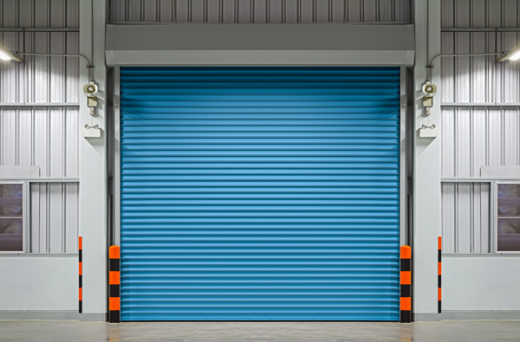
Fig 16: Rolling Shutter Door
Courtesy: gharpedia.com
The shutter comprises 1.25 cm thick steel slabs called laths or slates that are linked and coiled around a specially built pipe shaft called a “drum” located at the top. Two vertical steel guide tubes installed at the ends move the shutter. Steel sheets form the deep channels. Enough to accept the shutter and maintain it in place. The shutter can be curled in or out using a horizontal shaft and spring in the drum.
The action on large doors (above ten sqm) can be mechanized. These shutters are commonly found in stores and godowns. This shutter functions like a curtain, protecting from fire and theft and wind and hail.
Shops and godowns commonly use these shutters. This shutter serves as a curtain, protecting from fire and theft and wind and hail. Shops and godowns commonly employ these shutters. This shutter serves as a curtain, protecting from fire and theft and wind and hail.
D. Types of Doors Based on the Method of Construction:
17. Panel Doors:
Panel doors have been popular in the past for a long time. Its name suggests that the door is made up of panels rather than a single piece of wood or other material. After that, each panel will be fitted together to form the finished door. It can feature a six-panel door with six inset rectangles or squares inside. A door with multiple panels is known as a panel door.
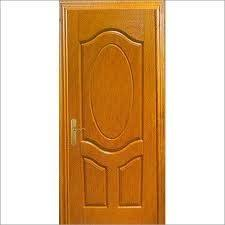
Fig 17: Panel Door
Courtesy: sourcechamp.com
If you want to let light through the door, the panel door can also be fitted with glass panes set into the wood. Panel doors are typically used for external doors. However, if you want a thicker door that can better deaden sound, panel doors can also be used as interior doors.
18. Flush Doors:
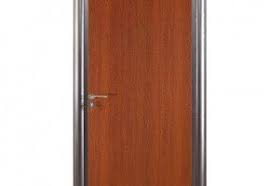
Fig 18: Flush Door
Courtesy: suppliersplanets.com
Due to their beautiful look and simple construction, flush doors are now the most prevalent type used in homes and public buildings. Both sides of these doors have a joint-less surface. They are simple to clean and decorate because of their straight face. Flush doors are also stronger, durable, and less expensive than panel doors. They appear lovely and appealing with various laminates and veneers that resemble natural wood and are available in a wide range of options.
19. Louvered Doors:
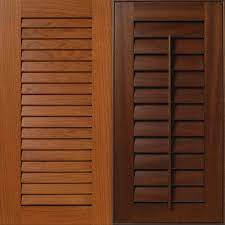
Fig 19: Louvered Door
Courtesy: wizcraft.com
A Louvered door comprises Louvers, which are horizontal blades of wood, glass, or other materials arranged in a pattern. Louvered Doors are used when privacy, natural ventilation, and peace & quiet are required, as they allow air to travel through even when closed.
They provide small openings for air and light to flow through. The louvered door is an essential part of any home’s interior design. They must be long-lasting and popular at the same time.
E. Types of Doors Based on the Components of the Doors:
20. Battened & Ledged Doors:
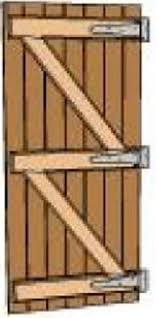
Fig 20: Battened and Ledged Door
Courtesy: civilblog.org
It is the most basic door that is commonly used in tiny openings. Battens are vertical boards that make up this type of door. Battens range in size from 10 to 20 cm in width and 2-4 cm in thickness.
21. Battened, Ledged & Braced Doors:
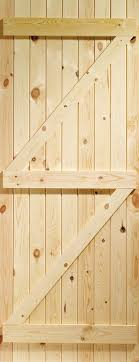
Fig 21: Battened, Ledged, and Braced Door
Courtesy: xljoinery.co.uk
These doors are upgraded versions of battened and ledged doors with additional slanted or diagonal bracing components. These are included to give the door more stiffness.
22. Battened, Ledged, Framed Doors:
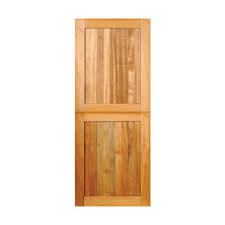
Fig 22: Battened, Ledged, and Framed Door
Courtesy: ogbuildafrica.com
This kind of door has a simple battened and ledged design, and the frame construction is in the form of verticals. Stiles is another name for this vertical framework and is kept at a width of 100mm. The styles are retained the same thickness as the ledge and batten utilized.
23. Battened, Ledged, Framed, and Braced Doors:
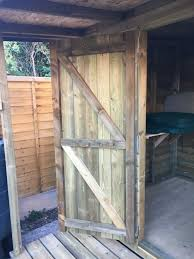
Fig 23: Battened, Ledged, and Braced Door
Courtesy: xljoinery.co.uk
This door varies from Battened, Ledged, and Framed door types. This door style includes additional supports to boost its strength and durability.
Conclusion
The doors are critical in anchoring the house’s safety and protecting your health. Because doors are regarded as the face of a home, they must be given the same level of importance as all other aspects that contribute to its aesthetic appeal. Its pleasant appearance, of course, will always put you in a good mood. Information about the many types of doors can assist you in making the best door option for your home, office, workshop, shop, or any other business structure.
References
1. 23 Different Types of Doors | Steel Doors | Revolving Door. (2021, July 9). 9To5Civil; 9to5civil.com. https://9to5civil.com/types-of-doors/
2. Types of Doors in the Construction Industry (12 Different Types). (2020, July 21). Constructionor.Com; constructionor.com. https://constructionor.com/types-of-doors/
3. Nick. (2020, August 9). 20 Different Types Of Doors Used In Buildings Ultimate Guide | Construction Hike. Construction Hike; constructionhike.com. https://constructionhike.com/20-different-types-of-doors-used-in-buildings-ultimate-guide/
4. Mahajan, B. (2019, December 28). 25 Types Of Doors For Your Perfect Home | Type Of Door | Type Of Doors | Different Types Of Doors | Door Types. Civiconcepts; civiconcepts.com. https://civiconcepts.com/blog/types-of-doors
5. mohdsuhel. (2021, April 2). Types of Doors Used in the Building – CivilMint.Com. CivilMint.Com; civilmint.com. https://civilmint.com/types-of-doors-used-in-the-building/
6. Rajput, K. (2021, October 28). 23 Different Types of Doors. CivilJungle; civiljungle.com. https://civiljungle.com/types-of-doors/
If you have a query, you can ask a question here.



We are the main importers of exterior and interior luxury apartments, villas and houses of character doors.
In the affirmative please send PDFs, specifications and best prices for 3xport.
Thanking you in advance for your reply,
Sincere regards,
Francis
Technically speaking , is the term, “timber door” considered the same as “flush door”?
Can it be disputed as 2 different classification for different types of door?